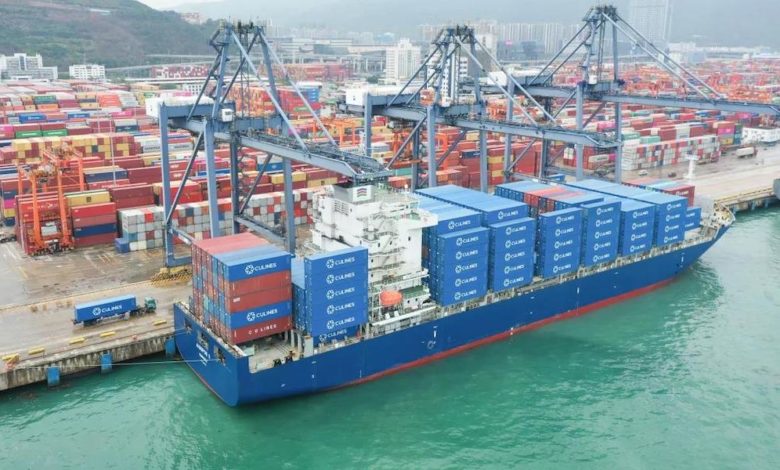Chinese dominate new entries into the top 50 liner rankings

Since the pandemic started there’s been plenty of changes in the liner rankings, not just at the top where Mediterranean Shipping Co (MSC) has replaced Maersk.
In its latest weekly report, liner consultancy Sea-Intelligence has charted which carriers have risen up through the ranks over the past two and a half years and how the lines have tried to wean themselves off the charter market during the current sky high markets.
Seven carriers have climbed into the top 50 ranks since January 2020 with the Chinese to the fore.
CU Lines was not even in the top 100 at the outset of the pandemic, but now operates a fleet of 82,000 teu and is the world’s 24th largest carrier. Likewise, Hong Kong-registered BAL has leapt from outside the top 100 to 44th spot, one spot ahead of another new entrant Transfar, a liner with strong ties to China’s top online retailer, Alibaba. Shanghai Jin Jiang, meanwhile, has seen its fleet grow by 124% over the same timeframe and now occupies 35th spot in the top 50 lineup.
The non-Chinese related liners entering the top 50 club include Pasha Hawaii, Tropical Shipping and most intriguingly Russia’s FESCO. Since the war with Ukraine began most global liners with the notable exception of China’s COSCO, have stopped doing business with Russia. FESCO has managed to maintain its size despite sanctions over the past four months.
Also of note in the shuffling of largest liner rankings during the pandemic are the disappearance of three well known brands – NileDutch, absorbed by Hapag-Lloyd; Heung-A, absorbed into Sinokor; and Transworld Feeders, which has now become part of Unifeeder.
The Sea-Intelligence report also looks at how liners have moved to own tonnage rather than charter it during the pandemic. The vast majority of carriers have seen the charter ratio of their fleet decline. For the carriers combined, they operated 56% of their vessel capacity on charter in January 2020. This has now been reduced to 48% in June 2022.
“This is most likely a clear reflection of the tight container market, leading carriers to attempt to get more control of their vessel fleet, in a market where the charter rates remain downright astronomical,” Sea-Intelligence noted.

Ominous Signs for Global Liner Shipping
In 1995, there were only two Chinese carriers that operated internationally, and only one was allowed to call directly to Chinese ports. All the cargo was moved by barge and feeders to Hong Kong, Japan, or Korea.
There were no Chinese terminals in the top 50, let alone the top 10 or the top Global terminal. Shanghai had terminal 9 and terminal 10 (operated by HPH) each with 4 gantries and a limited vessel size due to the turning basin while Wai Gao Ciao on Pudong sat empty because trucks refused to go there and carriers would not pay the equalisation.
What most people did not see, was the string of small ports that were coming up along the coast. they all had excellent infrastructure, last-mile road and rail connectivity, but still no ships and very little cargo.
But this is how the Chinese strategy works – silent water and a rapid flow under a seemingly placid surface.
With the many carriers in the top 50, some names one had never heard of, they will grow to the top 20, and they will dominate Chinese container flow. Each will be subliminally controlled by the Chinese government and will do their bidding at will. They will ensure the competitive structure of chinese goods and the CNF will always be cheaper than European and other carriers.
This will become the dynamic part of the Belt and Road, and one that can be loosened and tightened at will. This is the belt where all Chinese trade armory will hang.
Beware and take heed, because this is not just commercial evolution and change of rankings. This is a hoard, and it will devour all before it.
#shipping #strategy #change #china #containershipping